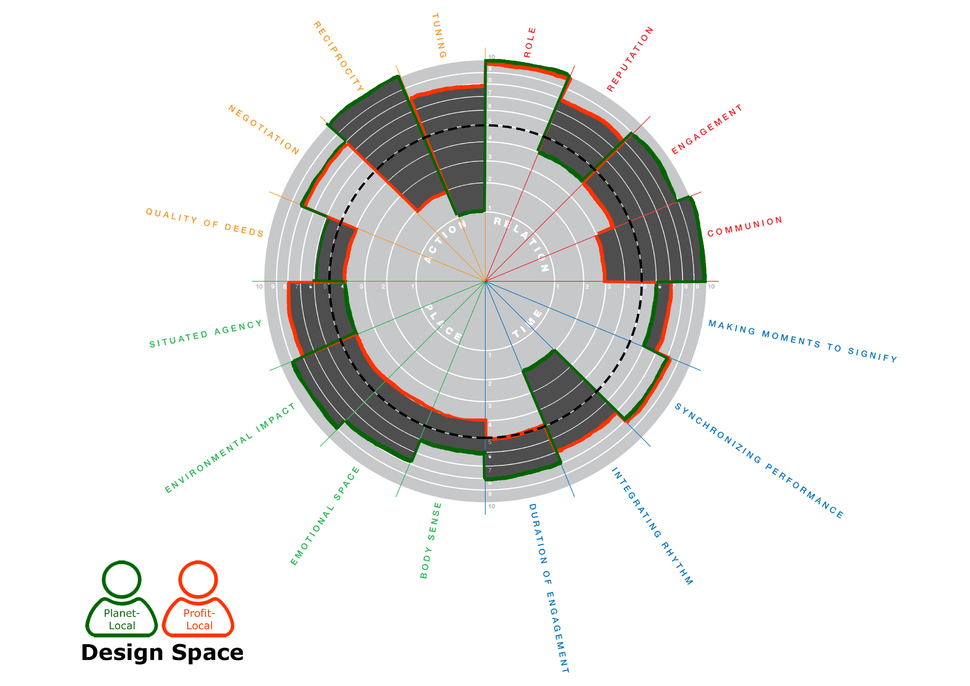First, we found out that we want to change via the Local Planet (scenario 2) because we assess this group being more change minded and (intrinsically) motivated to make Texel a more sustainable place to live. They strive for a eudaimonic well-being (Venhoeven, Bolderdijk, & Steg, 2013) and initiate all kinds of local projects in order to enhance this eudiamonic well-being.
In scenario 2 the Local Planet influences the Local Profit, so when we want to know how to change we zoomed in the relation between these two locals. We did that with the YUTPA framework.
In this paragraph we will describe the designspace by comparing the YUTPA framework of the perspectives of the Planet-Local and the Profit-Local. This designspace is formed, following two criteria. First, by comparing the values of both local lifestyle groups, the designspace will appear by overlapping the scores, since there is a gap to close. Secondly, scores are filterd below 5. Because when both Planet local an Profit local have low trust, it will too much effort to set up change. In the added picture you see this space market by the dodded line.
In sum, the designspace is visible in three dimensions with five aspects:
|
Dimension |
Aspect |
|
Relation |
|
|
Time |
|
|
Action |
|
This outcome would suggest that the design space lies mostly in the Time dimension. There lies a design space in an event or a series of events with a shared interest for both groups. Since this event creates shared moments to signify for the Planet-Local and the Profit-Local in which there is a shared goal (to synchronize performance). A series of events or follow-up meetings of one event could strengthen the duration of engagement. Besides this, the Roles are key during the event(s) and negotiations should be one of the main activities. This event could take form of a market or a fair for example, or in a political context since the roles (parties) and negotiations play a major role in this. It is important to take into account that the Planet-Local should positively influence the Profit-Local during this event, so this could be initiated by the Planet-Local with clear benefits for the Profit-Local to be actively involved.
The biggest differences can be found in the following dimensions and factors (differences of 5 or more points):
|
Dimension |
Aspect |
|
Relation |
|
|
Time |
|
|
Place |
|
|
Action |
|
This outcome suggest that there is not a design space here, but that frustration/friction could arise in these dimensions.
